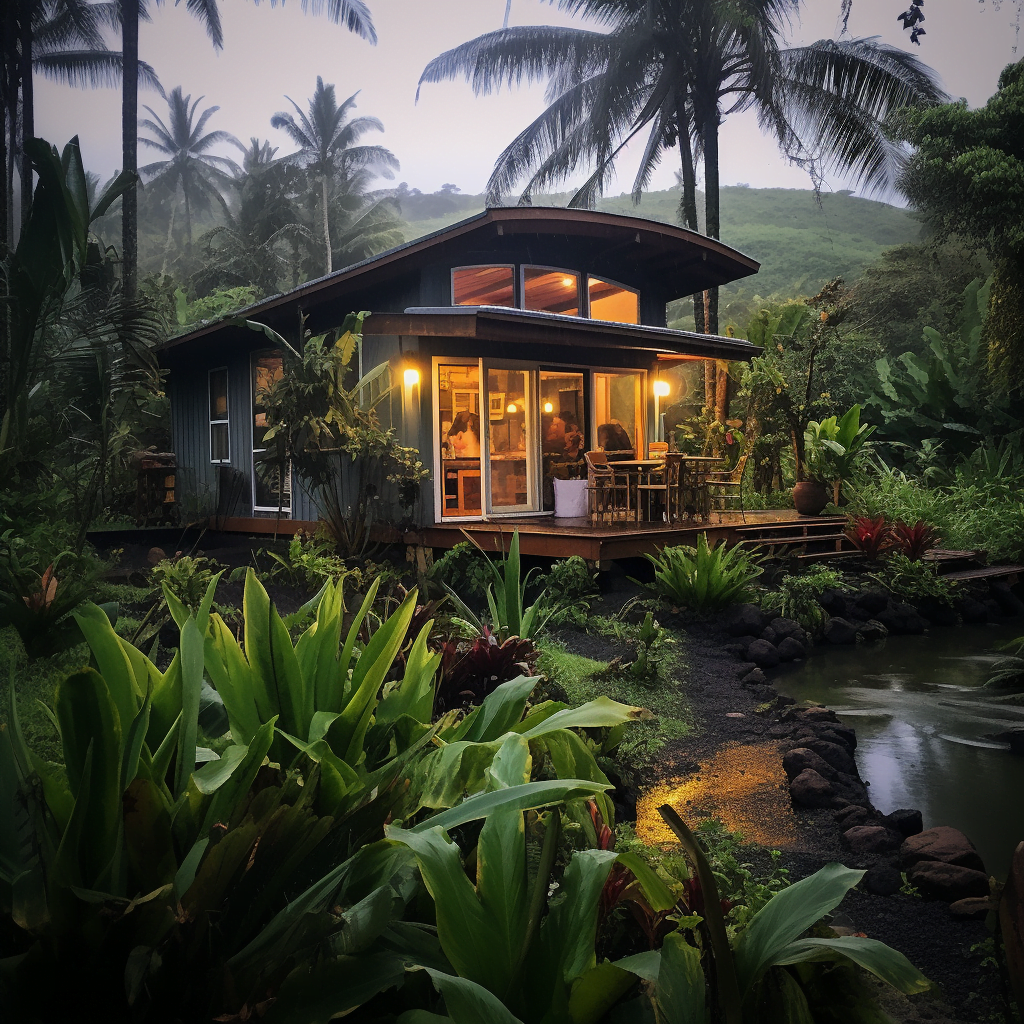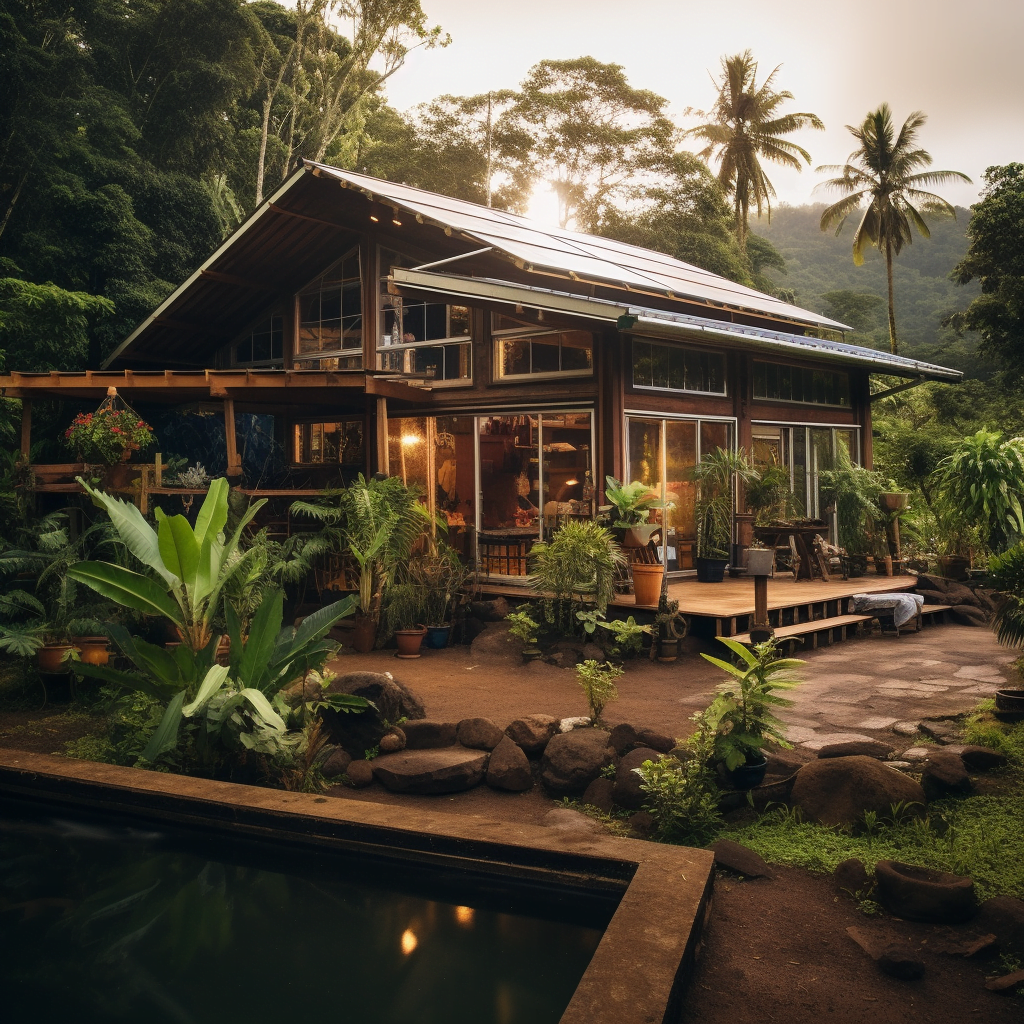Imagine waking up to the gentle sound of the Pacific Ocean, surrounded by an abundance of greenery, breathing in the fresh, clean air. This is the reality for those who choose to live off the grid in Hawaii, a lifestyle that’s as rewarding as it is challenging. In this comprehensive guide, we’ll delve into what it takes to make this dream a reality, covering everything from legalities to the daily joys of island life.
Understanding Off-Grid Living in Hawaii
Living off the grid means different things to different people, but at its core, it’s about self-sufficiency. It’s a lifestyle that’s both liberating and responsible, allowing you to harness Hawaii’s natural resources while minimizing your ecological footprint. Whether it’s the desire to disconnect from the hustle of modern life, the drive to reduce environmental impact, or simply the appeal of island living, Hawaii offers a unique opportunity to do so in a stunning setting.
But the path to off-grid living in Hawaii isn’t just a walk on the beach. It comes with its own set of challenges, from navigating volcanic terrain to understanding complex land laws. Yet, the rewards are plentiful: a sense of accomplishment, a deeper connection to the environment, and a community of like-minded individuals who share your values.
Legal Considerations in Hawaii
Before setting foot on your off-grid journey, you’ll need to become familiar with Hawaii’s legal landscape. Zoning laws vary from island to island, and some areas may have restrictions on land use that could affect your ability to live off-grid. For example, certain zones may require that you connect to public utilities, even if you plan to generate your own power. It’s essential to do your homework and consult with local authorities to ensure your dream doesn’t get tangled in red tape.
Finding the Perfect Location
Each Hawaiian island has its own personality and advantages for off-grid living. Oahu, while known for its bustling cities, also has secluded areas ideal for an off-grid setup. The Big Island, with its larger land mass and varied climates, offers plenty of space and diverse environments. Maui and Kauai, with their smaller communities and lush landscapes, can be perfect for those looking for a tight-knit off-grid community.
When scouting locations, consider factors such as:
- Proximity to resources like water and potential for solar and wind power
- Accessibility to markets or towns for supplies
- Community presence and support for off-grid living
Building Your Off-Grid Home
Constructing a home that’s both sustainable and suited to Hawaii’s climate is a key part of living off the grid. Materials like bamboo are not only sustainable but also resistant to the humidity and pests that can be prevalent in tropical climates. Shipping containers are another popular choice, offering durability and the potential for modern design.
When it comes to the actual building process, weigh the benefits of DIY construction against hiring local experts. While building your own home can be cost-effective and deeply satisfying, it’s important to recognize when professional help might save time and headaches in the long run.

Powering Your Home: Renewable Energy in Hawaii
Harnessing renewable energy is a cornerstone of off-grid living, and Hawaii’s climate is ripe for solar, wind, and hydroelectric power. The state’s commitment to renewable energy is evident in its tax incentives, which can help offset the initial investment costs. When planning your energy setup, consider the following:
- The average number of sunny days to determine solar panel needs
- Wind patterns for potential wind turbine installation
- Availability of a water source for micro-hydroelectric power
Battery storage is also a critical component, as it ensures you have power during less sunny days or calm winds. Look into the latest technologies, like lithium-ion batteries, which offer longer lifespans and better performance.
Water Collection and Purification
Rainwater harvesting is an excellent option in Hawaii, where rainfall is abundant in many areas. Collecting and storing rainwater can provide a sustainable water source for drinking, cooking, and irrigation. However, it’s important to understand the local regulations surrounding water rights and ensure your system meets health and safety standards.
Purification methods can range from simple filtration systems to more complex setups involving UV purification or reverse osmosis. The key is to find a system that works for your specific needs and location.
Waste Management Solutions
Effective waste management is critical for maintaining Hawaii’s pristine environment. Composting toilets are a popular choice for off-grid residents as they require no water and convert human waste into compost that can be used to enrich the soil. When planning your waste management system, consider these factors:
- Local regulations regarding human waste disposal
- The size of your household and waste output
- The type of composting system that best fits your lifestyle
Growing Your Own Food
Hawaii’s tropical climate is ideal for growing a wide range of fruits, vegetables, and other crops. When planning your garden or farm, consider starting with local staples such as taro, sweet potatoes, and coconuts, which are well-suited to the soil and climate. Here are some tips for a successful off-grid garden:
- Test your soil to understand its composition and what amendments it might need
- Use companion planting to naturally deter pests and promote healthy growth
- Implement rainwater irrigation systems to make the most of Hawaii’s rainfall
Staying Connected
While off-grid living can provide a sense of solitude, staying connected to the outside world is still important for many. Satellite internet and cell service can keep you in touch with friends and family, as well as provide access to emergency services when needed. Consider these options for maintaining communication:
- Satellite internet providers that offer service in remote locations
- Cell phone boosters to enhance signal strength in areas with poor reception
- Shortwave radios or satellite phones for emergency backup communication
Financial Considerations
The cost of establishing an off-grid homestead in Hawaii can be significant, but with careful planning and budgeting, it’s an achievable goal. Here’s a breakdown of potential costs to consider:
- Land: Prices vary widely based on location and size, but expect to pay anywhere from $50,000 to over $500,000.
- Home construction: Depending on materials and labor, costs can range from $60,000 to $200,000 or more.
- Renewable energy setup: Initial investments for solar panels, wind turbines, and battery storage can total $10,000 to $30,000, not including potential tax incentives.
Remember to account for ongoing expenses such as maintenance, property taxes, and living costs when creating your budget.
Living with the Land: Hawaiian Culture and Traditions
Adopting an off-grid lifestyle in Hawaii means more than just living sustainably; it’s about integrating into the local culture and respecting the traditions that have shaped the islands for centuries. The Hawaiian concept of “Aloha ʻĀina,” or love of the land, is a philosophy that aligns closely with off-grid values. By embracing these principles, you’ll not only enrich your own experience but also contribute positively to the community and environment.
Community and Networking
Building a network with other off-grid enthusiasts can provide invaluable support and knowledge. Whether through local meetups, online forums, or community events, connecting with others who share your lifestyle can offer both practical advice and camaraderie.
Conclusion
Living off the grid in Hawaii is an adventure that promises a life of simplicity, sustainability, and connection to nature. With the right preparation and respect for the land and culture, it’s a lifestyle that can provide immense satisfaction and peace.
FAQs
- Is it legal to live off the grid in Hawaii?
Yes, with adherence to local laws and regulations. - How much does it cost to set up an off-grid home in Hawaii?
Costs vary widely but expect to invest between $120,000 and $730,000+. - Can I grow my own food in Hawaii?
Absolutely! Hawaii’s climate is ideal for a variety of crops.
Checklist for Going Off-Grid in Hawaii
- [ ] Research legal requirements
- [ ] Choose the right location
- [ ] Plan your home and energy setup
- [ ] Arrange water and waste systems
- [ ] Prepare for financial investment




